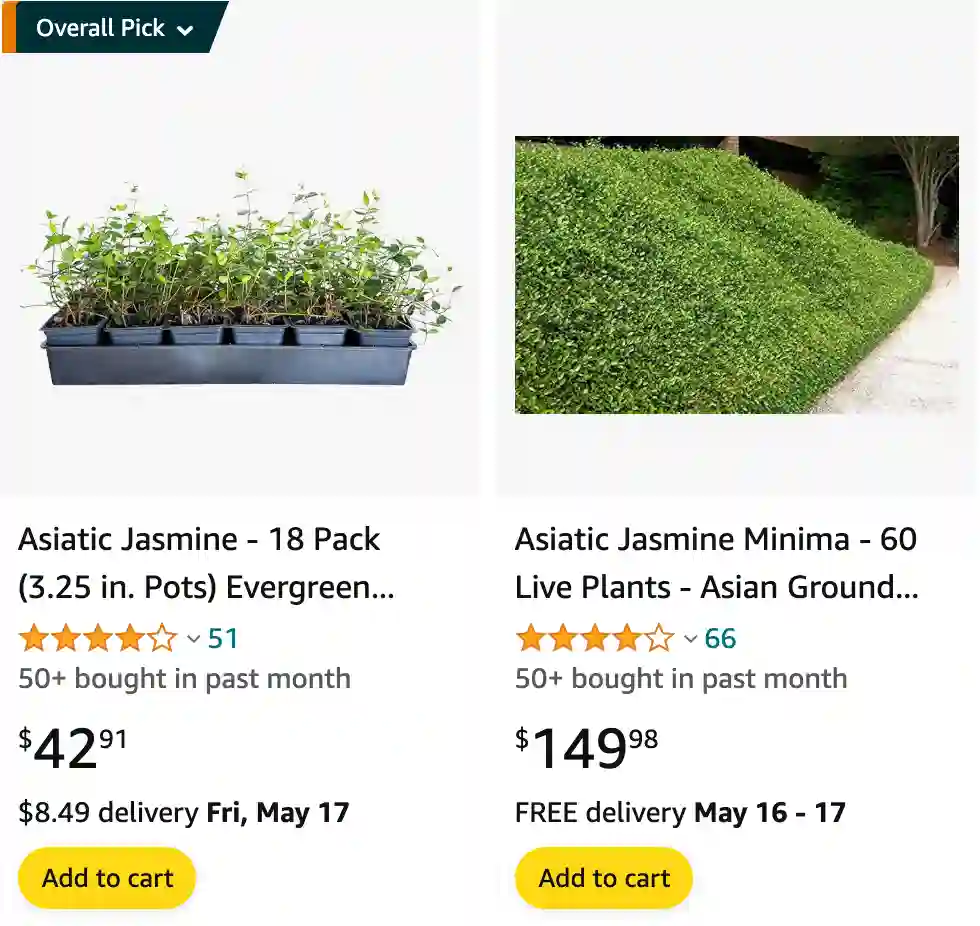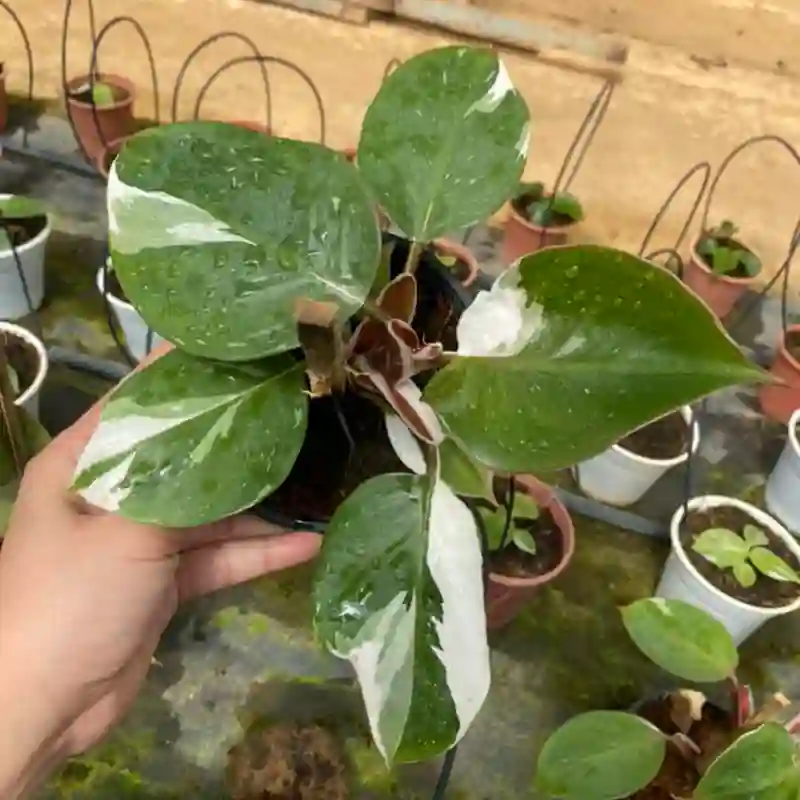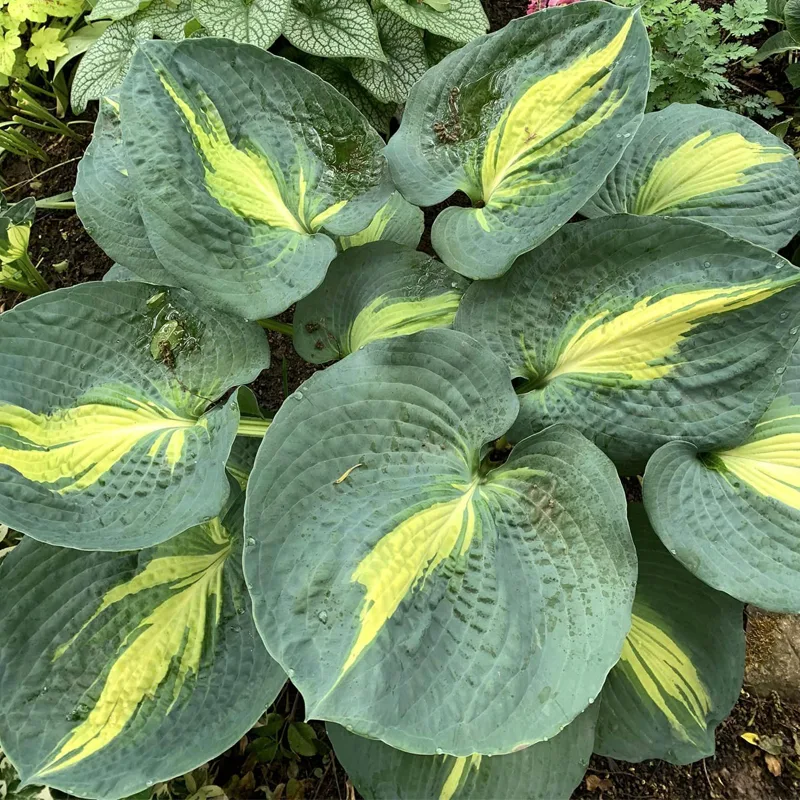
What is asiatic jasmine?
Asiatic jasmine, also known as Trachelospermum Asiaticum, is a versatile and attractive evergreen vine or ground cover plant. It features glossy green leaves and small, fragrant white flowers that bloom in late spring to early summer. Its dense growth habit and ability to tolerate a variety of growing conditions make it a popular choice for landscaping and gardening projects.
How to plant asiatic jasmine?
Planting Asiatic jasmine was a fun and rewarding experience for me. I chose a spot in my garden with well-draining soil and partial shade, as Asiatic jasmine thrives in these conditions. I dug holes about 6 inches deep and spaced them about 12 to 18 inches apart to allow room for growth. After placing the plants in the holes, I backfilled with soil and watered them thoroughly to help them settle in. It’s important to keep the soil moist but not waterlogged, especially during the establishment period.
Does asiatic jasmine flower?
Yes, Asiatic jasmine does flower, which adds to its appeal in the garden. The small, fragrant white flowers bloom in late spring to early summer, creating a beautiful contrast against the glossy green foliage. While the flowers are not showy like some other plants, they contribute to the overall charm of Asiatic jasmine.
How to get rid of asiatic jasmine?
Getting rid of Asiatic jasmine can be a bit of a challenge due to its vigorous growth and spreading nature. I’ve found that regular maintenance, including pruning to control its size and shape, is essential. Additionally, manually pulling out any unwanted runners or using a weed killer specifically designed for broadleaf plants can help manage its growth. It’s important to be persistent and thorough to prevent it from taking over other areas of the garden.
Do deer eat asiatic jasmine?
I’ve heard that deer typically avoid Asiatic jasmine due to its strong fragrance and slightly bitter taste. In my experience, my Asiatic jasmine plants have remained untouched by deer, even when other plants in my garden have been nibbled on. However, it’s always a good idea to monitor your garden and take precautions if deer are a common issue in your area.
Does asiatic jasmine climb?
Asiatic jasmine is known for its climbing ability and versatility in the garden. It can be trained to climb fences, trellises, or walls with the help of some support. I’ve enjoyed watching my Asiatic jasmine gracefully climb and cover a trellis in my backyard, adding a touch of greenery and elegance to the space.
Does asiatic jasmine smell?
While Asiatic jasmine doesn’t have a strong or noticeable scent, some people may detect a subtle, pleasant fragrance when they get close to the plant. Personally, I haven’t noticed much of a smell from my Asiatic jasmine, but I appreciate its lush green foliage and low-maintenance qualities.
How far apart to plant asiatic jasmine?
I spaced my Asiatic jasmine plants about 12 to 18 inches apart when planting them in my garden. This spacing allows them room to spread and fill in the area while still providing adequate airflow and sunlight to each plant. Over time, they have filled in nicely, creating a lush ground cover.
How fast does asiatic jasmine grow?
Asiatic jasmine is a relatively fast-growing plant, especially under optimal growing conditions. With proper care and regular watering, I’ve observed significant growth in my plants within just a few months. Its vigorous growth habit makes it an excellent choice for quickly covering large areas or filling in empty spaces in the garden.
How to propagate asiatic jasmine?
Propagating Asiatic jasmine is relatively easy and can be done through stem cuttings. I’ve successfully propagated new plants by taking cuttings from healthy, established vines and placing them in a pot with well-draining soil. Keeping the soil consistently moist and providing indirect sunlight encourages root development, and within a few weeks, new roots begin to form, signaling successful propagation.
Is asiatic jasmine poisonous?
While Asiatic jasmine is not considered highly toxic, it can cause irritation if ingested, especially in large quantities. I make sure to keep my pets away from the plants and monitor them when they’re outside in the garden to prevent any accidental consumption. Overall, as long as basic precautions are taken, Asiatic jasmine is a safe and beautiful addition to the garden.
Is asiatic jasmine toxic to dogs?
Asiatic jasmine is generally considered non-toxic to dogs, but it’s always best to monitor your pets around plants and take precautions to prevent them from ingesting any potentially harmful foliage. I’ve personally never had any issues with my dogs interacting with Asiatic jasmine, but I still make sure to keep an eye on them when they’re exploring the garden.
When to plant asiatic jasmine?
I planted my Asiatic jasmine in early spring, once the threat of frost had passed and the soil had begun to warm up. This timing allowed the plants to establish themselves before the heat of summer, giving them the best chance for success. I’ve found that spring planting gives the plants plenty of time to grow and fill in before the colder months arrive.
Where to buy asiatic jasmine?
Asiatic jasmine can be purchased from a variety of sources, including nurseries, garden centers, and online retailers. I personally prefer to buy plants from local nurseries, as I can inspect the quality of the plants and get advice from knowledgeable staff members. However, online retailers also offer a wide selection of Asiatic jasmine plants, making it convenient to find exactly what you’re looking for.
Will asiatic jasmine grow in shade?
Yes, Asiatic jasmine can grow in shade, although it prefers partial shade to full sun. In my experience, planting Asiatic jasmine in an area with dappled sunlight or morning sun and afternoon shade has resulted in the best growth and overall health of the plants. However, it’s essential to ensure that the soil is well-draining, as Asiatic jasmine does not tolerate soggy conditions well.
Asiatic Jasmine vs Star Jasmine
In my gardening observations, I’ve noticed that Asiatic Jasmine distinguishes itself from Star Jasmine (Trachelospermum Jasminoides) with smaller, darker green leaves and creamier yellow flowers. It is hardier and more restrained in growth, reaching heights of 6-12 inches while spreading and rooting laterally.
Asiatic Jasmine vs Confederate Jasmine
I found Asiatic Jasmine to be a hardy ground cover that spreads beautifully with a fresh, earthy scent that fills the garden, while Confederate Jasmine, with its delicate white blooms, brought a sweet fragrance that’s perfect for evening strolls, but it requires a bit more care to flourish in my garden.
Asiatic Jasmine vs Jasmine Minima
Asiatic Jasmine impressed me with its resilience and ability to thrive in various light conditions, forming dense mats of green that are perfect for ground cover, whereas Jasmine Minima, though smaller in size, delighted me with its dainty leaves and subtle fragrance, making it ideal for smaller spaces or as a charming border plant.
In conclusion, Asiatic Jasmine stands as a versatile and captivating presence in my garden. Whether utilized as a ground cover, a trailing vine, or a container plant, its beauty and low maintenance requirements make it an enticing choice for landscaping enthusiasts. With fragrant flowers, striking foliage, and easy propagation, Asiatic Jasmine rightfully earns its place in warm climate gardens. Embrace the allure of this charming evergreen, and witness the transformation of your outdoor space into a lush and inviting oasis.
If i die, water my plants!



